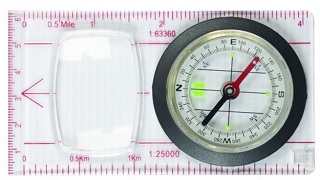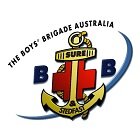
The compass is a fairly simple piece of equipment that was invented by the Chinese around 2500 B.C. It consists of a magnetized piece of steel balanced on a pivot so that it is free to swing in any direction.
NEEDLE
The north end is usually painted red (occasionally black), stamped with the initial N, formed in the shape of an arrow, or a combination of the above. When left to itself it will eventually come to rest with one end pointing to magnetic north. To bring the needle to rest more quickly, it is suspended in a sealed compartment filled with air or liquid.
* AIR FILLED compasses work just fine, the drawback is that you must wait quite some time for the needle to come to rest so that you can take a bearing. It also requires that it be held stationary, so does not work well when hand held.
* LIQUID FILLED compasses are the most effective in breaking the swing of the needle quickly. The majority of compasses on the market are liquid filled with a mixture of water and alcohol.
ORIENTING ARROW AND LINES
The orienting arrow is the large arrow in the center of the compass pointing to North on the azimuth dial. Its double lines capped with a peak resemble a dog house, and it is frequently referred to as such. Orienting lines run parallel to the orienting arrow and help you to set the course. These, and other markings, are sometimes fluorescent, which provides better viewing at lower light levels such as early morning or evening, and in bad weather.
AZIMUTH RING (Bezel)
This is the dial surrounding the compass arrow that indicates degrees, from 0 to 360, in a full circle. Graduations, or degree markings, are listed by either 1, 2, 5 or 15 , with the more complete graduations providing greater accuracy. The 15 graduations are not recommended. To adjust for declination, the difference between magnetic north and true north, compasses feature a stationary, rotating, or adjustable azimuth dial.
* STATIONARY azimuth dials require that you turn the compass itself in order to align the arrow (magnetic north) and the “dog house” on the compass. You must manually correct your reading each time to reflect the declination.
* ROTATING azimuth dials allow you to adjust your compass setting for declination by aligning the arrow (magnetic north) and the “dog house”, and then adjusting the dial by the degree difference of declination. This only needs to be done each time you start off on a new bearing.
* ADJUSTABLE, set screw, azimuth dials operate like the rotating ones, but the set screw allows you to rotate the orienting arrow to compensate for declination and then lock it into place. This only needs to be done once, at the start of your trip. This is a nice feature if you are going to be using it frequently in the same area.
BASE
The base plate is almost always clear, in orienteering compasses, so that you can see through it to the map for better alignment. The direction of travel arrow runs down the center of the base plate from the azimuth ring to the front, and is often marked “read bearing here”. Magnifying lenses are frequently inset into the base plate and are very helpful when looking at details on the map since the markings are quite small. Map scales are marked on the edges of the base like a ruler. Those with more than one scale will generally show 1:24,000 and 1:365,000 since these are the two most common. Rounded corners are more comfortable in the hand, and some feel they slide more smoothly across a map and its folds. Levels are not necessary but improve accuracy, especially when hand held. A lanyard, watchband, zipper pull, or tripod mount allows you to fasten the compass onto the outside of your body or pack, keeping the compass handy. They should not be made of metal.
SIGHTING DEVICES
These help you to more accurately take a line of sight heading to your chosen landmark. There are both mirror and lensatic sighting devices.
* MIRROR devices have a vertical line marked in the center of a hinged lid, with a notched sight at the top. First line up your chosen landmark in the notched sight at the top of the mirrored lid. Then align the center of the needle pivot with the vertical line in the mirror. You can now accurately read your bearing in the mirror. This device gives you approximately 2 degrees of error instead of the approximately 5 degrees of error that you get with a simple compass.
* LENSATIC devices have a vertical sight in the lid and a separate lens that is both used to align your landmark and read your bearing. As with the mirror device you sight your bearing, line up the vertical sight with the notch on the lens, and read the bearing. Because these are more accurate than the mirror devices, they are used by the military and often called marching compasses.
CENTER SPOTTERS
Similar to a telescope or binocular in appearance these provide no magnification. The compass and sight are inside. This allows you to sight a landmark and take your bearing all at once.
CLINOMETERS
These are used to measure the angle of incline. This angle, combined with a known distance, can be used to calculate height or, with a known height, distance. It is also used for determining slope and, in snow conditions, predict avalanche hazard.
